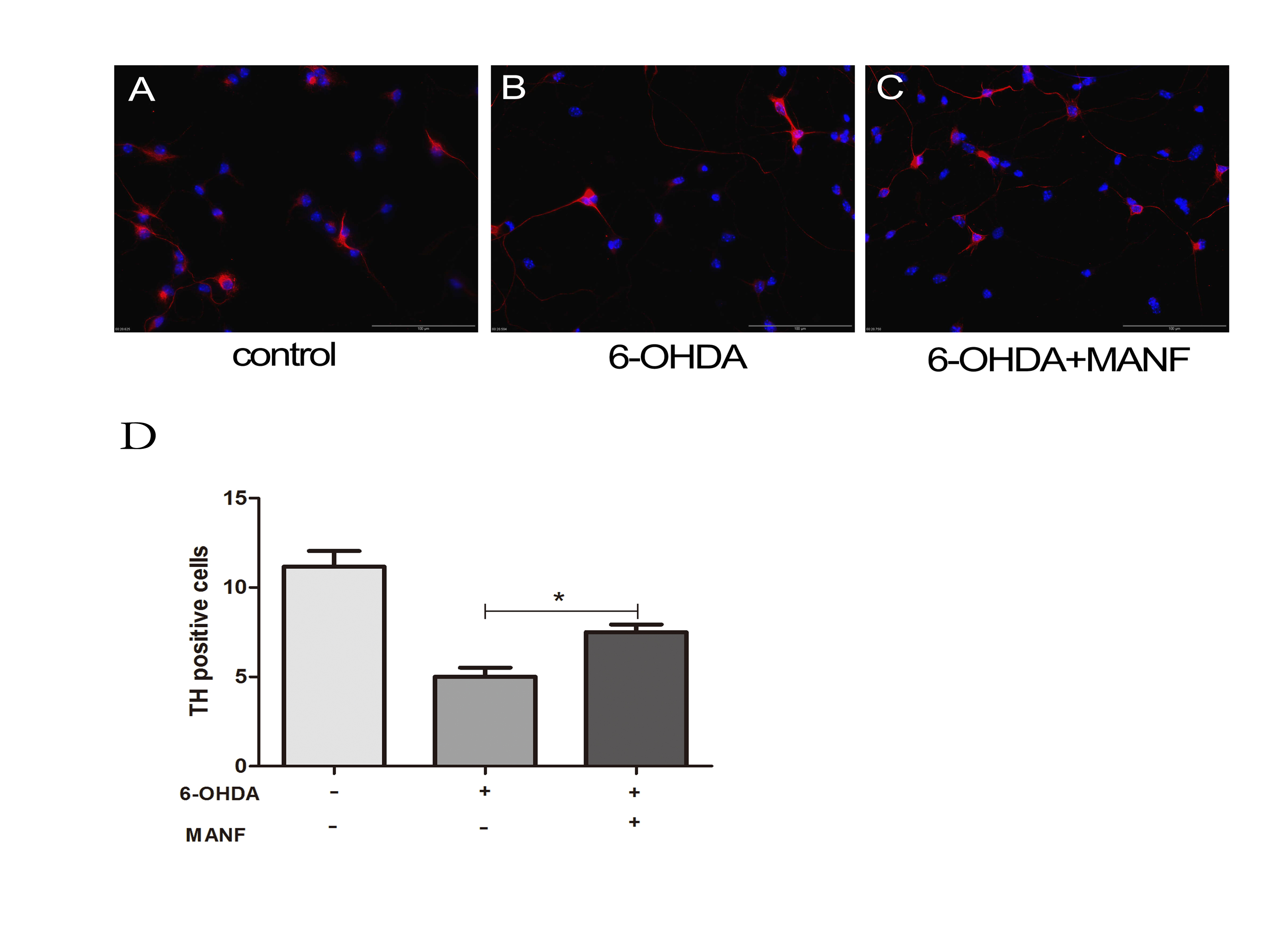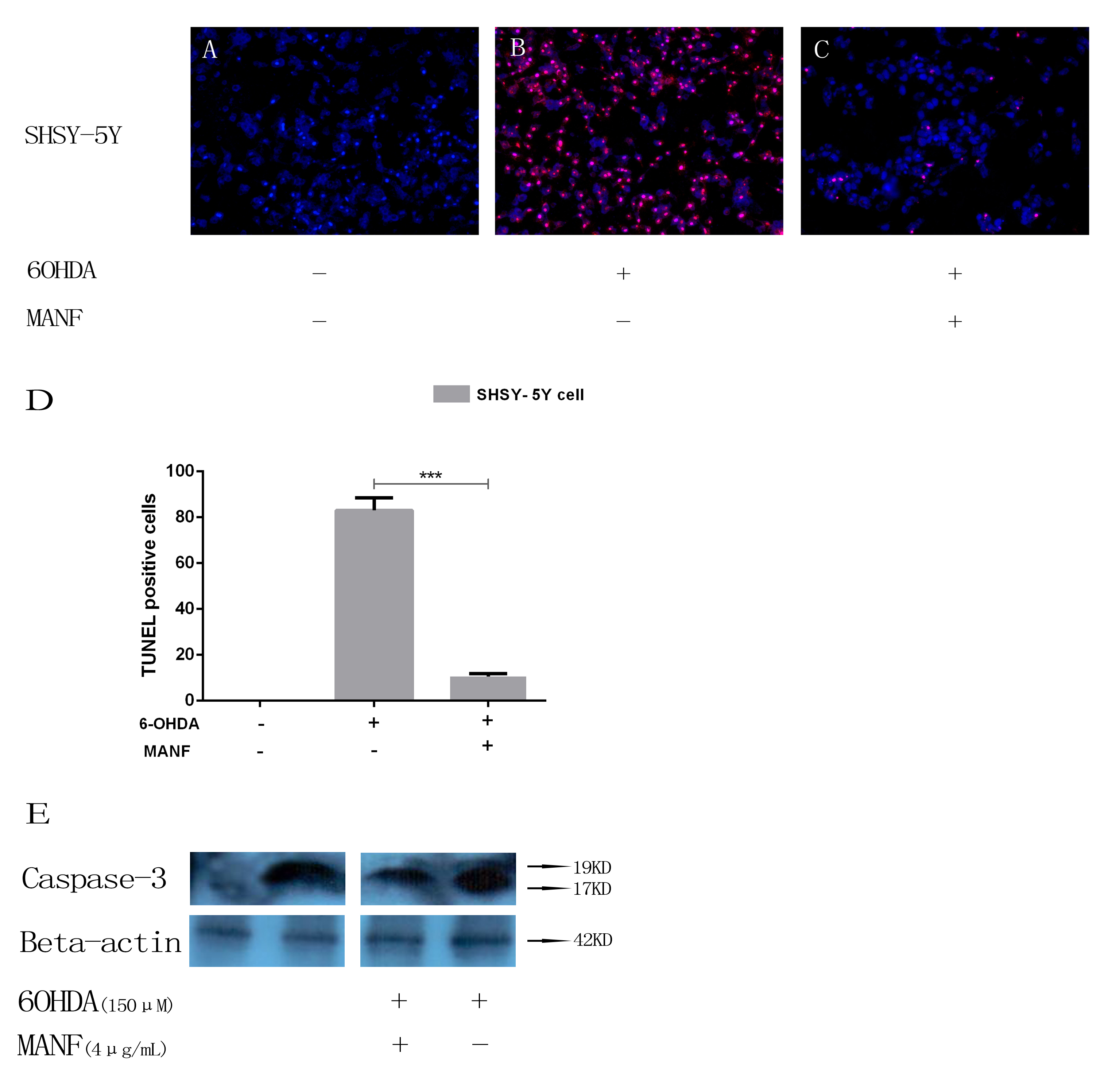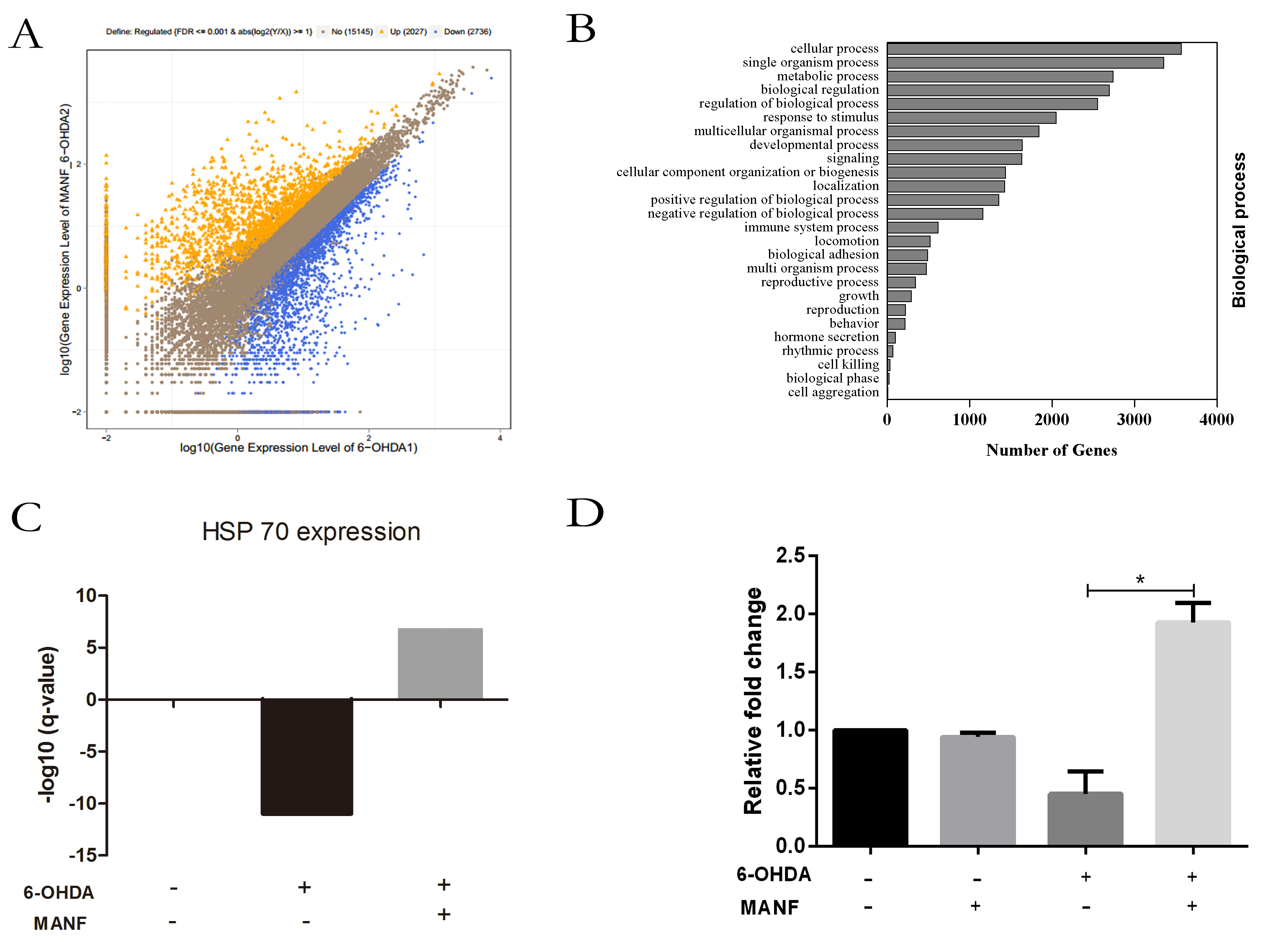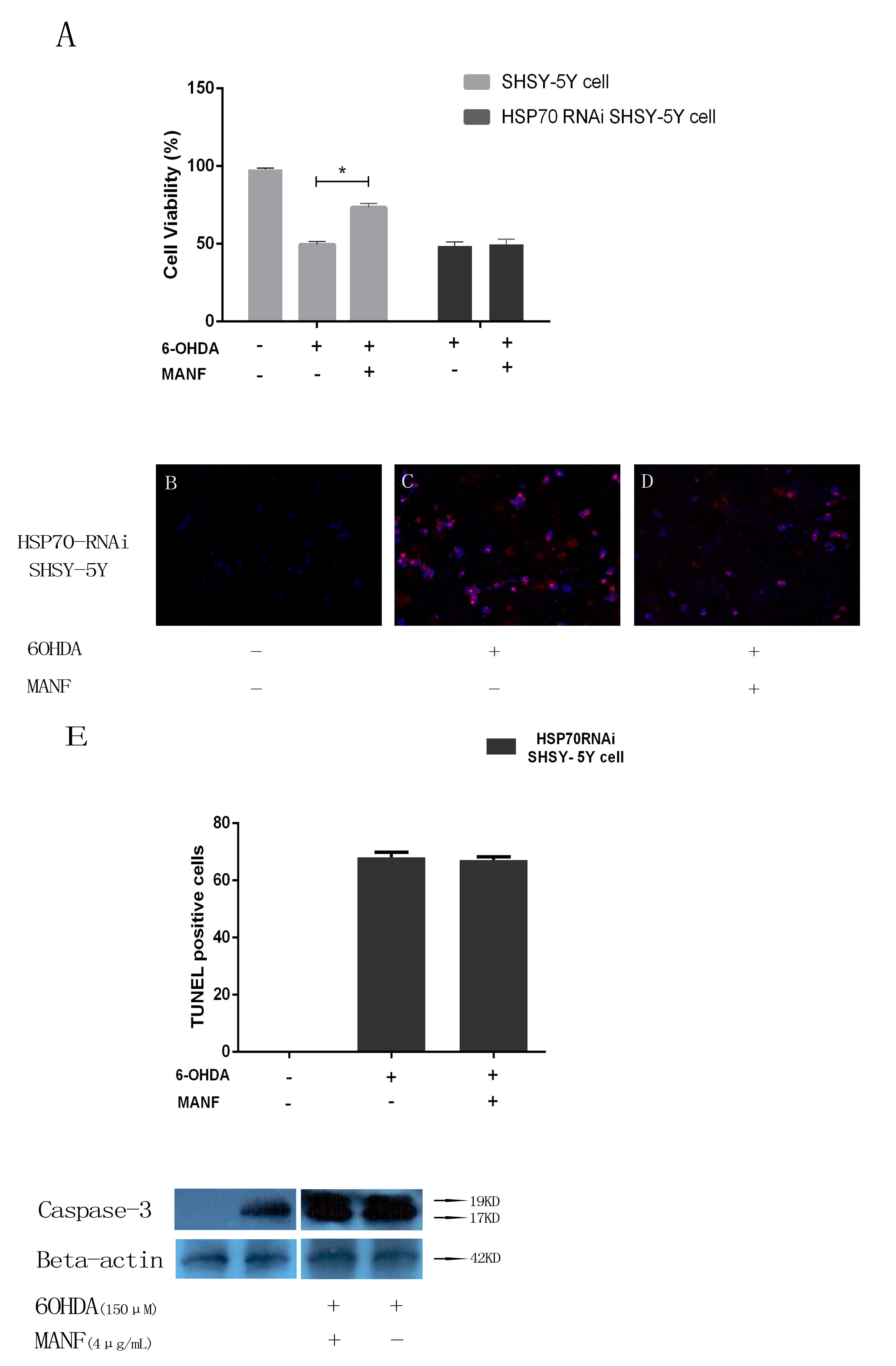Session Information
Date: Tuesday, June 6, 2017
Session Title: Parkinson's Disease: Pathophysiology
Session Time: 1:45pm-3:15pm
Location: Exhibit Hall C
Objective: The newest candidate growth factor for dopaminergic neurons is Mesencephalic Astrocyte-Derived Neurotrophic Factor (MANF). Signaling mechanisms by which MANF protects dopaminergic neurons from ER stress remain unclear. HSP70s, plays a critical function in the rescue of misfolded proteins. Protein misfolding plays an important role in the development of PD . MANF is involved in the regulation of endoplasmic reticulum (ER) and unfolded protein response (UPR). Thus, we hypothesize that MANF exhibits its neuroprotection via upregulation of HSP70.
Background: Parkinson’s disease (PD) is one of the most common neurodegenerative disorders of the central nervous system. It is characterized by chronic and progressive loss of midbrain dopaminergic (DA) neurons. The precise etiology and disease pathogenesis are mostly unknown. The use of neurotrophic factors represents a potential treatment strategy. They are essential to neuronal differentiation and maturation during development and adulthood.
Methods: In the present study, we used a PD in vitro model of purified embryonic dopaminergic neurons, derived from 6-OHDA Rat model of PD and SHSY-5Y cells. Cell viability following exposure to 6-OHDA as excitotoxic stimulus was assessed by MTT assay and immunocytochemistry. We used TUNEL staining and Western blot analysis to investigate the protective effect of MANF in SHSY-5Ycells treated with 6-OHDA. Using RNA-seq analysis, realtime PCR, and RNAi, we could demonstrate that HSP70 was involved in the protection of MANF.
Results: We found the neuroprotective effects of Mesencephalic astrocyte-derived neurotrophic factor (MANF) in our in vitro system, which could be attributed to HSP70 upregulation. Not only due to these antiapoptosis capacities but also with respect to the increasing knowledge about the regulation of endoplasmic reticulum (ER) stress and unfolded protein response (UPR), which could be positively influenced by MANF.
Conclusions: Our data suggest that MANF inhibits apoptosis induced by 6-OHDA in SHSY-5Y cells via upregulating HSP70 in the transcriptional pattern. MANF represents an interesting novel candidate for further in vivo evaluation in PD.
References: 1. Petrova P, Raibekas A, Pevsner J, Vigo N, Anafi M, Moore MK, Peaire AE, Shridhar V, Smith DI, Kelly J et al: MANF: a new mesencephalic, astrocyte-derived neurotrophic factor with selectivity for dopaminergic neurons. J Mol Neurosci 2003, 20(2):173-188.
To cite this abstract in AMA style:
H. Sun, M. Jiang, J. Zhang, L. Feng, Y. Liu, Z. Nie, J. Fang, L. Jin. Mesencephalic astrocyte-derived neurotrophic factor reduces cell apoptosis via upregulating HSP70 in SHSY-5Y cells [abstract]. Mov Disord. 2017; 32 (suppl 2). https://www.mdsabstracts.org/abstract/mesencephalic-astrocyte-derived-neurotrophic-factor-reduces-cell-apoptosis-via-upregulating-hsp70-in-shsy-5y-cells/. Accessed April 1, 2025.« Back to 2017 International Congress
MDS Abstracts - https://www.mdsabstracts.org/abstract/mesencephalic-astrocyte-derived-neurotrophic-factor-reduces-cell-apoptosis-via-upregulating-hsp70-in-shsy-5y-cells/




